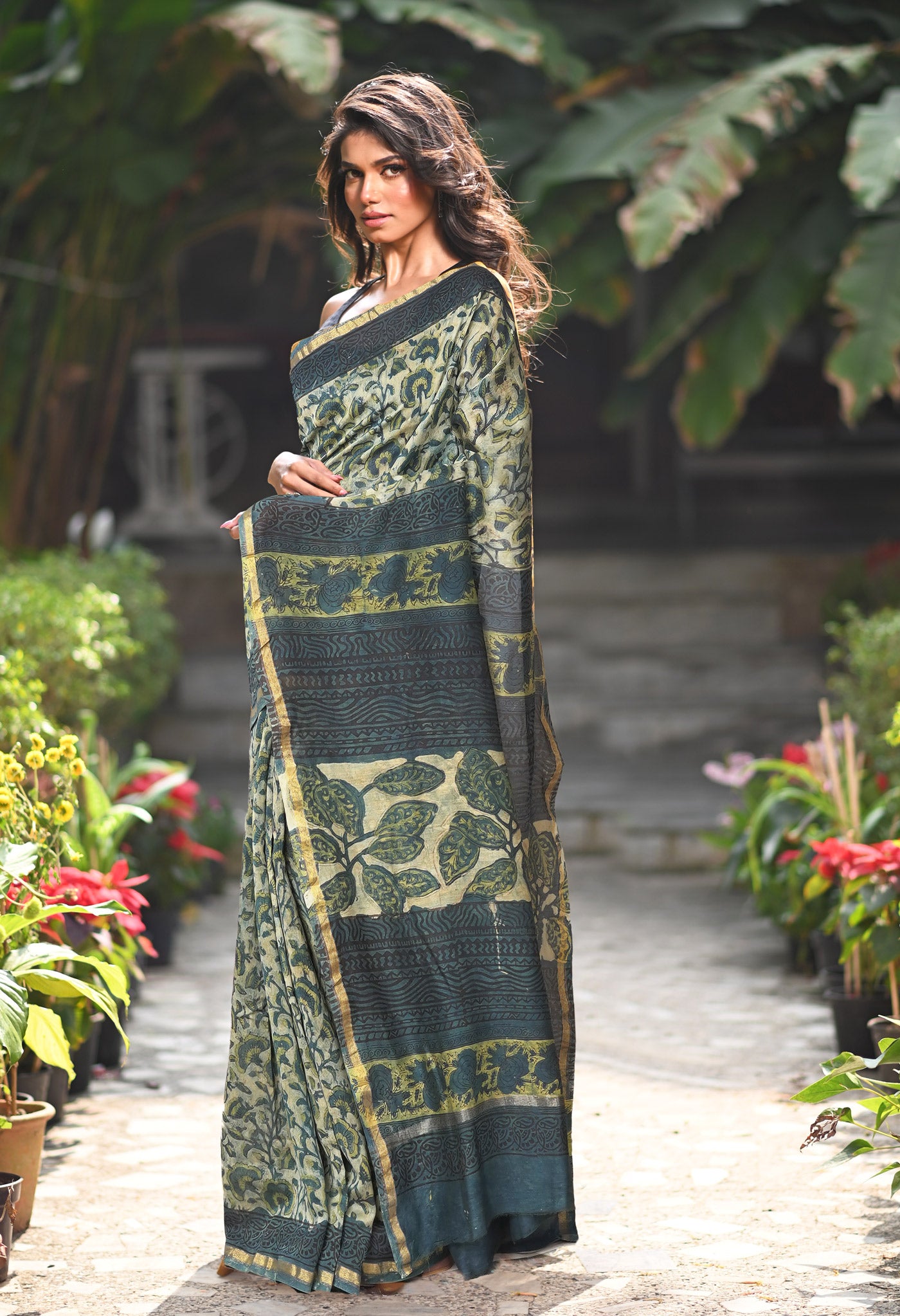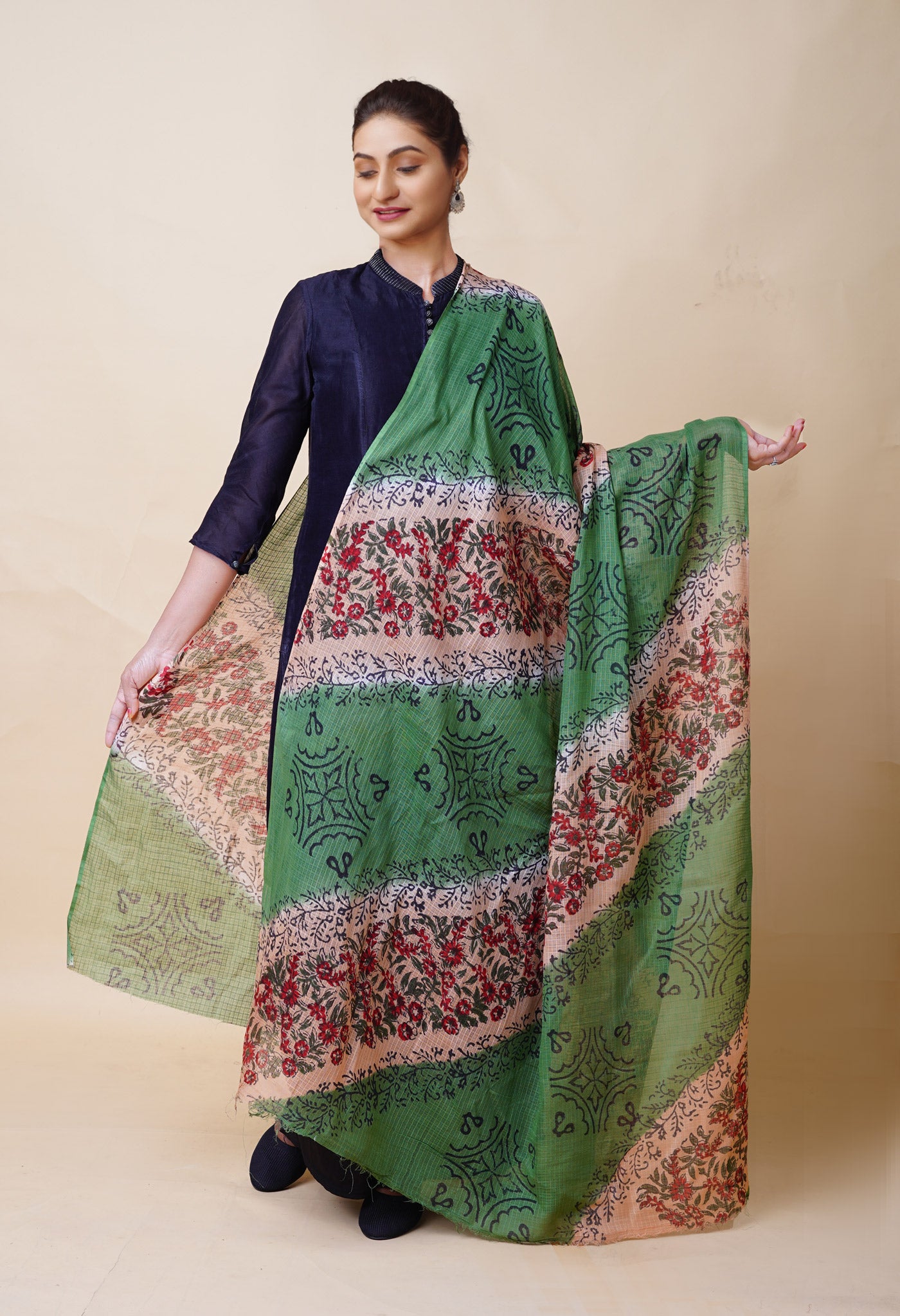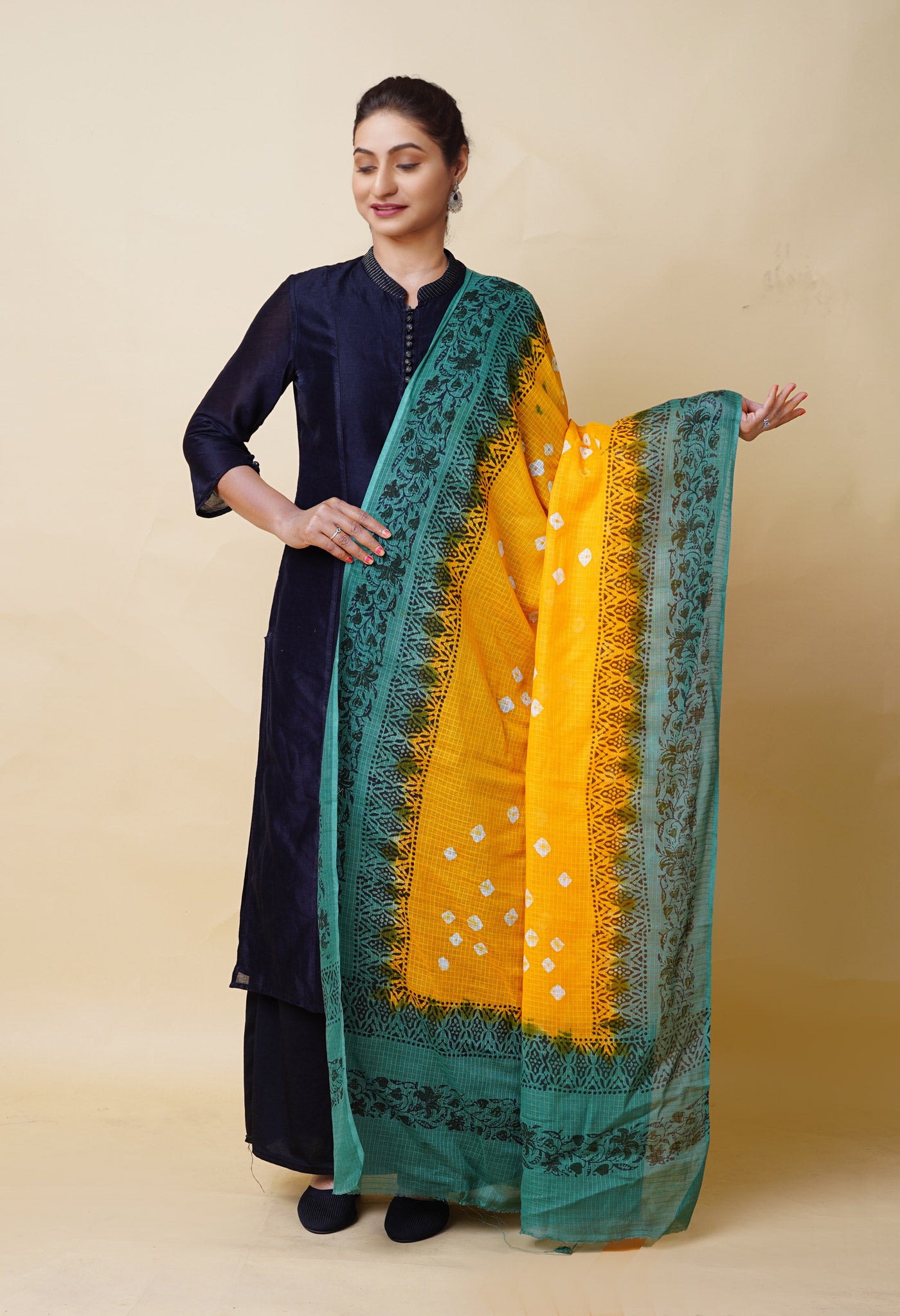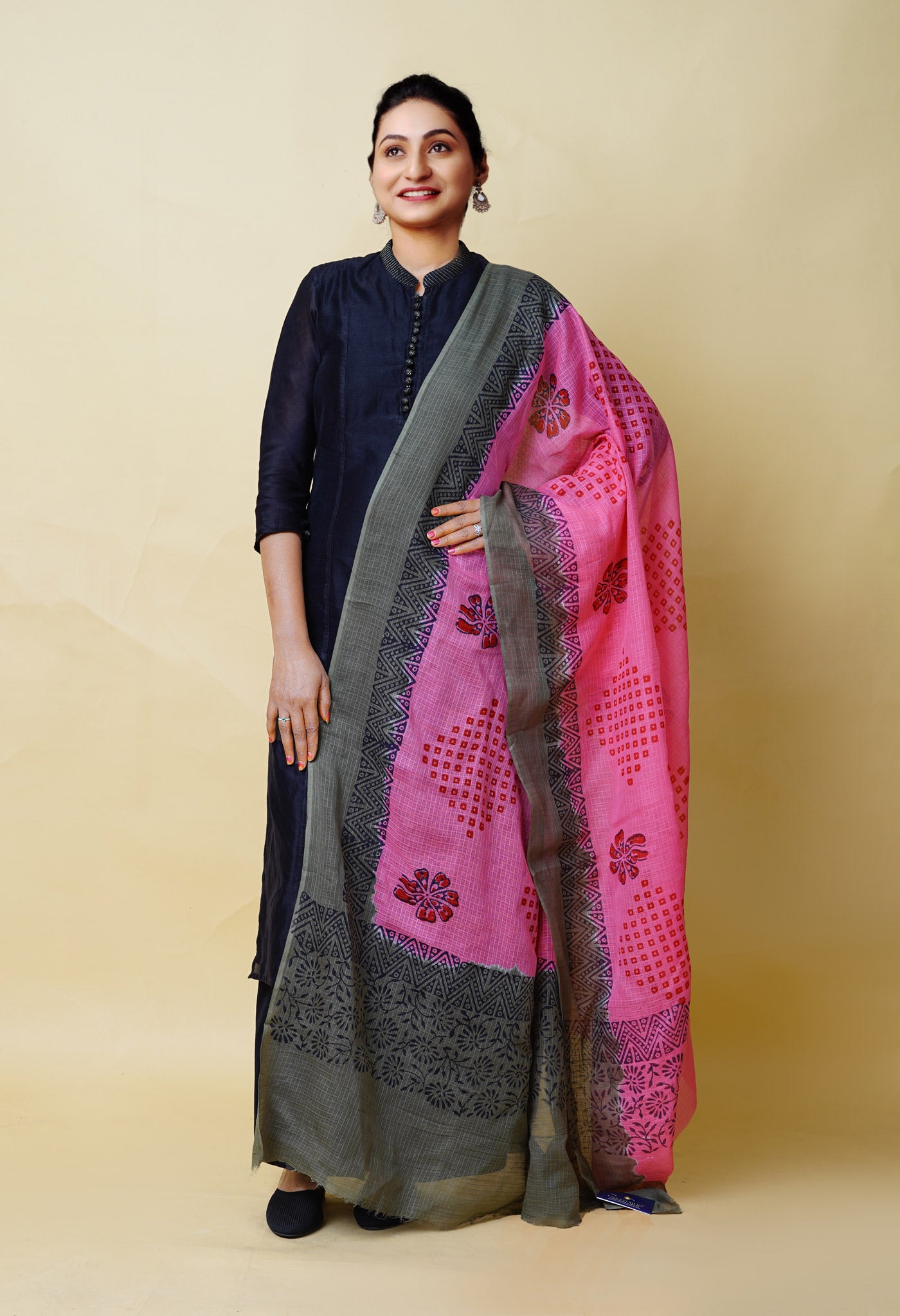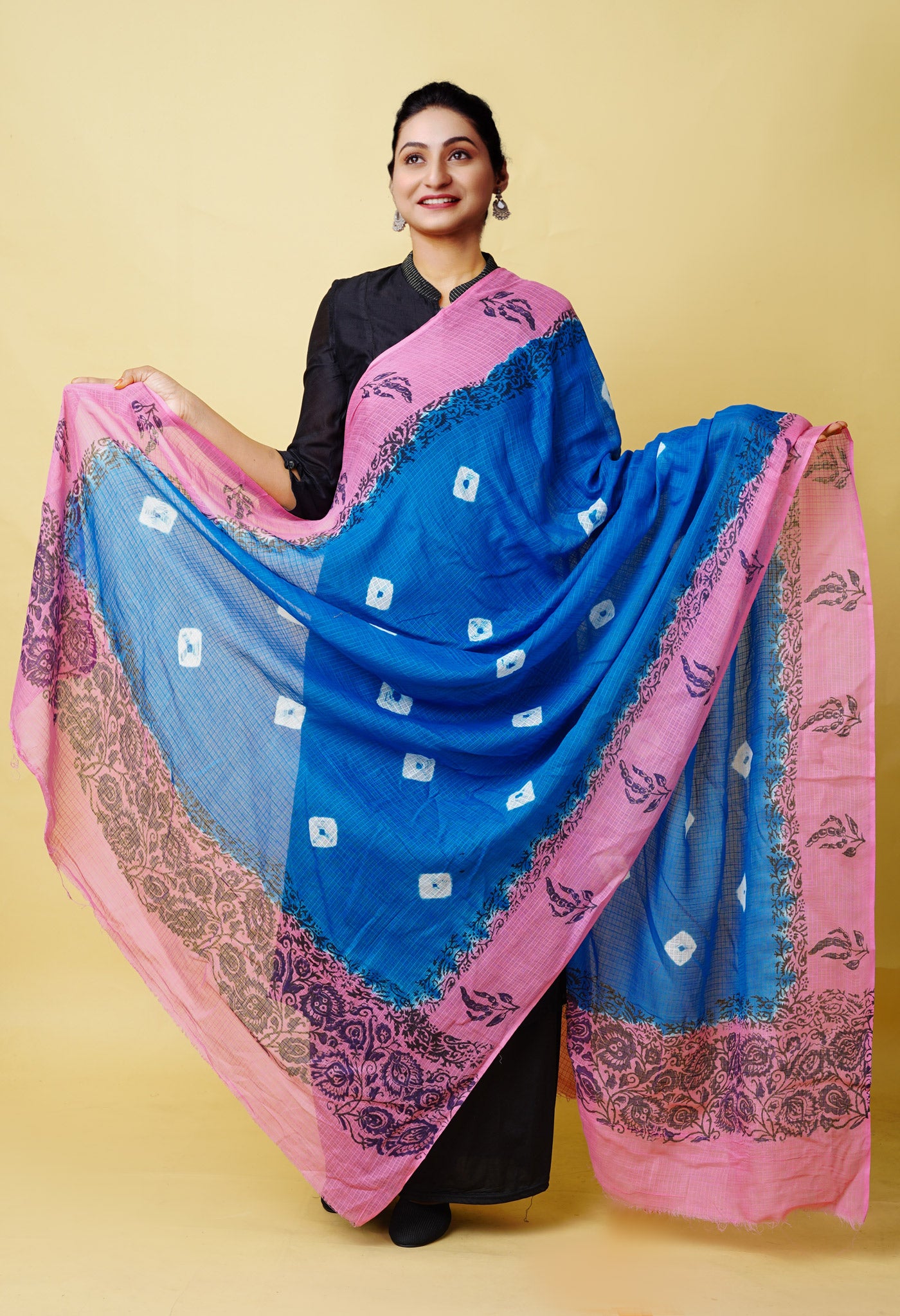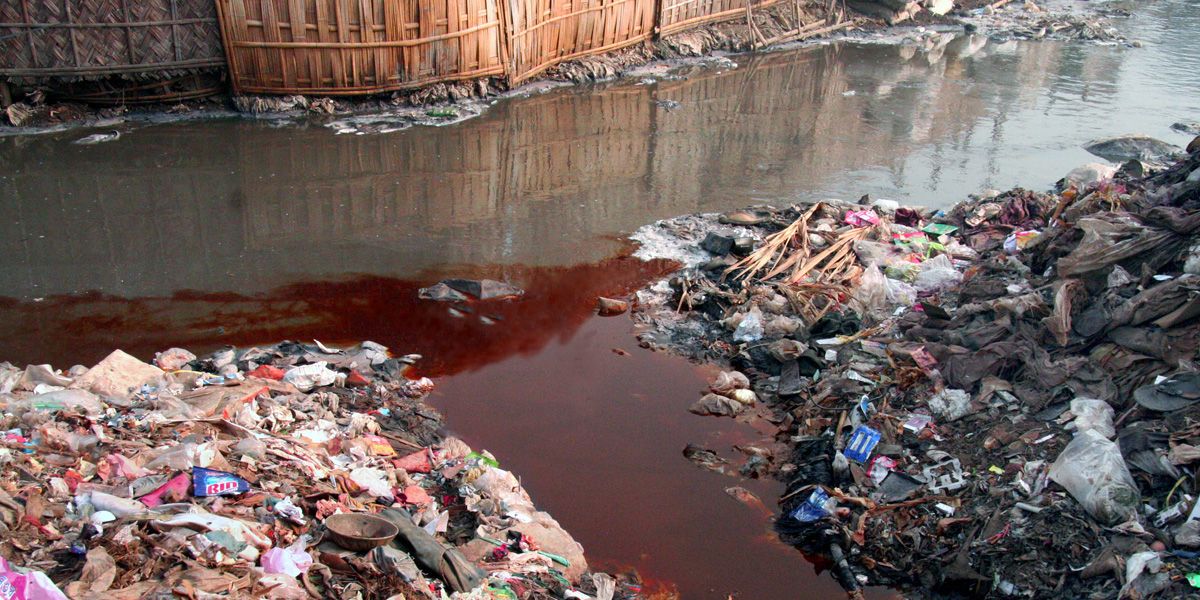
Fast Fashion and its speedy degrading impact upon the environment
When the condition of an insatiable appetite created by fast changing trends results in buying more and more clothes than is necessary to stay up to date, it results in the undesirable situation called Fast Fashion.
 Demand calls for mass-production, and to meet the quick-changing needs, most times cheap, disposable clothing is the outcome. The quality being low and not being very durable, the innumerable collections that are put out though purchased, are also quickly disposed off.
What bears the brunt then, of this mad cycle, is the environment.
When did Fast Fashion begin to take hold?
Much before from when the textile industry got organized, there were rules. There were in fact limits on volume of imports of clothing and textiles or how much clothing and textiles could be imported into any given country.
In 1995, when the World Trade Organization’s Agreement on Textiles and Clothing (ATC) was implemented for a 10 year-period, it changed all that. With gradual relaxations that began, by the end of its term in 2005, there were no significant rules left to follow. In fact new rules enabled brands worldwide to access cheap labour and to produce and sell clothing in unlimited amounts, and at lower costs than ever before.
Fast Fashion had taken root.
So what was wrong with Fast Fashion?
Let us simply begin with a glance at the alarming statistics put out by Fast Fashion
Alarming statistics regarding Fast Fashion
Demand calls for mass-production, and to meet the quick-changing needs, most times cheap, disposable clothing is the outcome. The quality being low and not being very durable, the innumerable collections that are put out though purchased, are also quickly disposed off.
What bears the brunt then, of this mad cycle, is the environment.
When did Fast Fashion begin to take hold?
Much before from when the textile industry got organized, there were rules. There were in fact limits on volume of imports of clothing and textiles or how much clothing and textiles could be imported into any given country.
In 1995, when the World Trade Organization’s Agreement on Textiles and Clothing (ATC) was implemented for a 10 year-period, it changed all that. With gradual relaxations that began, by the end of its term in 2005, there were no significant rules left to follow. In fact new rules enabled brands worldwide to access cheap labour and to produce and sell clothing in unlimited amounts, and at lower costs than ever before.
Fast Fashion had taken root.
So what was wrong with Fast Fashion?
Let us simply begin with a glance at the alarming statistics put out by Fast Fashion
Alarming statistics regarding Fast Fashion
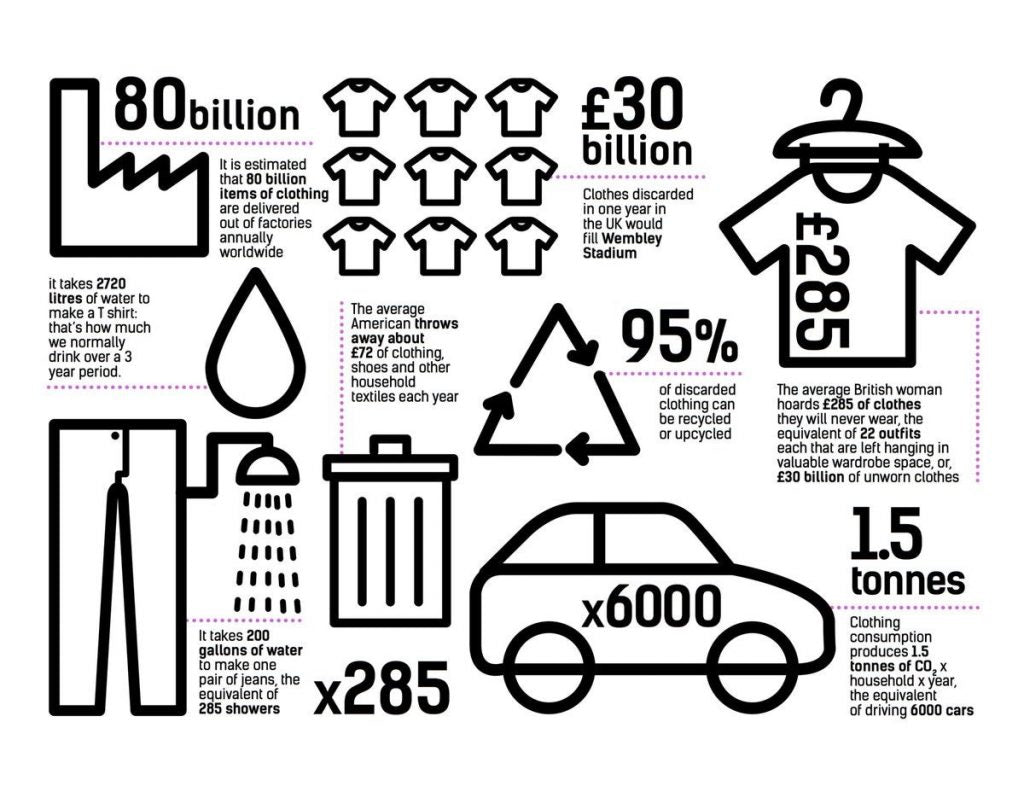
 The fashion industry is considered to be the second largest polluter in the world just after the oil industry. The environmental damage keeps increasing as the industry grows.
Solution - The first step lies in building awareness and the willingness to change.
Water Pollution
The fashion industry is considered to be the second largest polluter in the world just after the oil industry. The environmental damage keeps increasing as the industry grows.
Solution - The first step lies in building awareness and the willingness to change.
Water Pollution
 In most countries of the world, wherever garments are produced, untreated toxic waste water due to the chemical dyes being used, flow into the rivers and other water bodies nearest them. Harmful substances as lead, mercury, and arsenic, among others, are extremely harmful to both the aquatic life and the health of millions of people living by those river banks.
In fact this contamination also reaches the sea and more or less spreads around the globe.
Cotton that requires so much water for its growth and production, contaminates the water bodies around heavily from the use of fertilizers which pollutes both runoff waters and evaporation waters.
Solution :
In most countries of the world, wherever garments are produced, untreated toxic waste water due to the chemical dyes being used, flow into the rivers and other water bodies nearest them. Harmful substances as lead, mercury, and arsenic, among others, are extremely harmful to both the aquatic life and the health of millions of people living by those river banks.
In fact this contamination also reaches the sea and more or less spreads around the globe.
Cotton that requires so much water for its growth and production, contaminates the water bodies around heavily from the use of fertilizers which pollutes both runoff waters and evaporation waters.
Solution :

 Clothing has clearly become a disposed off item. As the industry generates more and more clothing, more of it goes to textile waste. A family in the western world throws away an average of 30 kg of clothing each year. Only 15% is recycled or donated, and the rest goes directly to the landfill or is incinerated.
Synthetic fibers, such as polyester, are plastic fibers, therefore non-biodegradable and can take up to 200 years to decompose. Synthetic fibers are used in 72% of the clothing.
Solution:
Clothing has clearly become a disposed off item. As the industry generates more and more clothing, more of it goes to textile waste. A family in the western world throws away an average of 30 kg of clothing each year. Only 15% is recycled or donated, and the rest goes directly to the landfill or is incinerated.
Synthetic fibers, such as polyester, are plastic fibers, therefore non-biodegradable and can take up to 200 years to decompose. Synthetic fibers are used in 72% of the clothing.
Solution:
 Chemicals are one of the main components in our clothes. They are used during fiber production, dyeing, bleaching, and wet processing of each of our garments. Moreover there is a heavy use of chemicals in cotton farming that is very much responsible for causing diseases and premature death among cotton farmers. The same fertilizers are also polluting very many freshwater bodies.
Chemicals are used in every part of the textile production for making fibers, bleaching and dyeing fabrics, etc… When they arrive in the shops, our clothes still contain a lot of chemicals, even clothes made of "100% natural" fiber. Our skin is our body's largest organ and absorbs anything we put on it, including chemicals in our clothes. These can present a real danger to our health.
A Greenpeace study for the Detox Campaign has identified 11 chemicals frequently used to make our clothes that contain toxins, carcinogens, and hormone disruptors which should be banned, but currently aren't.
A study found hazardous chemicals in 63% of the items tested from 20 different textile brands (including fashion giants).
Solution:
Choose organic fibers.
Choose sustainable brands.
Always wash new clothes before using them for the first time.
Greenhouse gas emissions
Chemicals are one of the main components in our clothes. They are used during fiber production, dyeing, bleaching, and wet processing of each of our garments. Moreover there is a heavy use of chemicals in cotton farming that is very much responsible for causing diseases and premature death among cotton farmers. The same fertilizers are also polluting very many freshwater bodies.
Chemicals are used in every part of the textile production for making fibers, bleaching and dyeing fabrics, etc… When they arrive in the shops, our clothes still contain a lot of chemicals, even clothes made of "100% natural" fiber. Our skin is our body's largest organ and absorbs anything we put on it, including chemicals in our clothes. These can present a real danger to our health.
A Greenpeace study for the Detox Campaign has identified 11 chemicals frequently used to make our clothes that contain toxins, carcinogens, and hormone disruptors which should be banned, but currently aren't.
A study found hazardous chemicals in 63% of the items tested from 20 different textile brands (including fashion giants).
Solution:
Choose organic fibers.
Choose sustainable brands.
Always wash new clothes before using them for the first time.
Greenhouse gas emissions
 A study revealed that the apparel industry accounted for 10% of global carbon emissions emanating due to the energy used during its production, manufacturing, and transportation of the millions of garments purchased each year.
Synthetic fibers (polyester, acrylic, nylon, etc.), used in the majority of our clothes, are made from fossil fuels, making production much more energy-intensive than with natural fibers.
Most clothes are produced in countries essentially powered by coal. This is the dirtiest type of energy in terms of carbon emissions.
Also, according to a study - "Cheap synthetic fibers also emit gases like N2O, which is 300 times more damaging than CO2."
Solution:
A study revealed that the apparel industry accounted for 10% of global carbon emissions emanating due to the energy used during its production, manufacturing, and transportation of the millions of garments purchased each year.
Synthetic fibers (polyester, acrylic, nylon, etc.), used in the majority of our clothes, are made from fossil fuels, making production much more energy-intensive than with natural fibers.
Most clothes are produced in countries essentially powered by coal. This is the dirtiest type of energy in terms of carbon emissions.
Also, according to a study - "Cheap synthetic fibers also emit gases like N2O, which is 300 times more damaging than CO2."
Solution:
 The soil being a fundamental element of our ecosystem, we need healthy soil for food production and also to absorb CO2. The massive, global degradation of soil is one of the main environmental issues our planet is currently facing. It presents a major threat to global food security and also contributes to global warming. The fashion industry plays a major part in degrading soil in different ways: overgrazing of pastures through cashmere goats and sheep raised for their wool; degradation of the soil due to massive use of chemicals to grow cotton;
deforestation hence causing soil erosion, due to the use of wood-based fibers like rayon.
Solution: Choose fibers friendly to the soil
Forest destruction caused by the fashion industry
The soil being a fundamental element of our ecosystem, we need healthy soil for food production and also to absorb CO2. The massive, global degradation of soil is one of the main environmental issues our planet is currently facing. It presents a major threat to global food security and also contributes to global warming. The fashion industry plays a major part in degrading soil in different ways: overgrazing of pastures through cashmere goats and sheep raised for their wool; degradation of the soil due to massive use of chemicals to grow cotton;
deforestation hence causing soil erosion, due to the use of wood-based fibers like rayon.
Solution: Choose fibers friendly to the soil
Forest destruction caused by the fashion industry
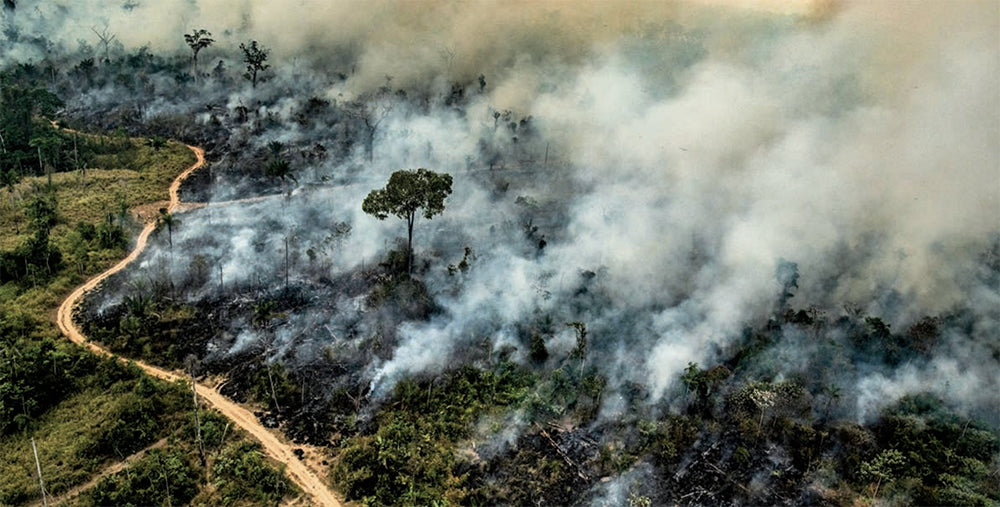 Every year, thousands of hectares of endangered and ancient forests are cut down and replaced by plantations of trees used to make wood-based fabrics such as rayon, viscose, and modal. A massive example of this would be the large-scale deforestation of the forests that has taken place over the past decade in Indonesia.
Solution: Choose eco-friendly or wood-saving fibres instead of rayon, modal or viscose
The Human angle
Working conditions
There are countries in which workers’ rights are limited or non-existent. Workers are exploited for their misery in life and taking advantage of their poverty they are made to work in any working conditions.
Wages in the fashion industry
Many fashion brands assure their customers that the workers who made their clothing are paid "at least the minimum legal wage". A living wage represents the bare minimum that a family requires to fulfil its basic needs (food, rent, healthcare, education, etc). Brands may a time are paying their employees quite less than what a person actually needs to live with dignity.
Working hours
Garment workers are often forced to work 14 to 16 hours a day, 7 days a week. During peak season, they may work excessive hours to meet the fashion brand's deadline. Their basic wages are so low that they cannot refuse overtime - aside from the fact that many would be fired if they refused to work overtime. In some cases, overtime is not even paid at all.
Health and safety conditions
Employees usually work with no ventilation, breathing in toxic substances, inhaling fiber dust or blasted sand in unsafe buildings.
The collapse of the Rana Plaza in 2013, killing 1134 garment workers in Dhaka, Bangladesh, was a shocker that woke up the world to the conditions in which textile workers slogged day in and day out.
Child labour in the fashion industry
168 million children in the world are forced to work. Because the fashion industry requires low-skilled labour, child labour is particularly common in this industry.
Union restrictions in the fashion industry
In most factories, garment workers are not allowed to form unions to defend their rights collectively. Governments’ laws and specific regulations in export zones where factories are established often restrict the creation of unions.
Some factories owners also threaten or physically attack unions members or fire them with total impunity, which does not encourage employees to form unions.
Every year, thousands of hectares of endangered and ancient forests are cut down and replaced by plantations of trees used to make wood-based fabrics such as rayon, viscose, and modal. A massive example of this would be the large-scale deforestation of the forests that has taken place over the past decade in Indonesia.
Solution: Choose eco-friendly or wood-saving fibres instead of rayon, modal or viscose
The Human angle
Working conditions
There are countries in which workers’ rights are limited or non-existent. Workers are exploited for their misery in life and taking advantage of their poverty they are made to work in any working conditions.
Wages in the fashion industry
Many fashion brands assure their customers that the workers who made their clothing are paid "at least the minimum legal wage". A living wage represents the bare minimum that a family requires to fulfil its basic needs (food, rent, healthcare, education, etc). Brands may a time are paying their employees quite less than what a person actually needs to live with dignity.
Working hours
Garment workers are often forced to work 14 to 16 hours a day, 7 days a week. During peak season, they may work excessive hours to meet the fashion brand's deadline. Their basic wages are so low that they cannot refuse overtime - aside from the fact that many would be fired if they refused to work overtime. In some cases, overtime is not even paid at all.
Health and safety conditions
Employees usually work with no ventilation, breathing in toxic substances, inhaling fiber dust or blasted sand in unsafe buildings.
The collapse of the Rana Plaza in 2013, killing 1134 garment workers in Dhaka, Bangladesh, was a shocker that woke up the world to the conditions in which textile workers slogged day in and day out.
Child labour in the fashion industry
168 million children in the world are forced to work. Because the fashion industry requires low-skilled labour, child labour is particularly common in this industry.
Union restrictions in the fashion industry
In most factories, garment workers are not allowed to form unions to defend their rights collectively. Governments’ laws and specific regulations in export zones where factories are established often restrict the creation of unions.
Some factories owners also threaten or physically attack unions members or fire them with total impunity, which does not encourage employees to form unions.
 Demand calls for mass-production, and to meet the quick-changing needs, most times cheap, disposable clothing is the outcome. The quality being low and not being very durable, the innumerable collections that are put out though purchased, are also quickly disposed off.
What bears the brunt then, of this mad cycle, is the environment.
When did Fast Fashion begin to take hold?
Much before from when the textile industry got organized, there were rules. There were in fact limits on volume of imports of clothing and textiles or how much clothing and textiles could be imported into any given country.
In 1995, when the World Trade Organization’s Agreement on Textiles and Clothing (ATC) was implemented for a 10 year-period, it changed all that. With gradual relaxations that began, by the end of its term in 2005, there were no significant rules left to follow. In fact new rules enabled brands worldwide to access cheap labour and to produce and sell clothing in unlimited amounts, and at lower costs than ever before.
Fast Fashion had taken root.
So what was wrong with Fast Fashion?
Let us simply begin with a glance at the alarming statistics put out by Fast Fashion
Alarming statistics regarding Fast Fashion
Demand calls for mass-production, and to meet the quick-changing needs, most times cheap, disposable clothing is the outcome. The quality being low and not being very durable, the innumerable collections that are put out though purchased, are also quickly disposed off.
What bears the brunt then, of this mad cycle, is the environment.
When did Fast Fashion begin to take hold?
Much before from when the textile industry got organized, there were rules. There were in fact limits on volume of imports of clothing and textiles or how much clothing and textiles could be imported into any given country.
In 1995, when the World Trade Organization’s Agreement on Textiles and Clothing (ATC) was implemented for a 10 year-period, it changed all that. With gradual relaxations that began, by the end of its term in 2005, there were no significant rules left to follow. In fact new rules enabled brands worldwide to access cheap labour and to produce and sell clothing in unlimited amounts, and at lower costs than ever before.
Fast Fashion had taken root.
So what was wrong with Fast Fashion?
Let us simply begin with a glance at the alarming statistics put out by Fast Fashion
Alarming statistics regarding Fast Fashion

- 80 billion garments are produced each year
- 52 micro-collections per year are released by fast-fashion brands instead of the usual 2 seasons
- 400% more clothes are produced now compared to 20 years ago
- 7 times on an average, a garment is worn before being thrown away
- 35 kg textile waste is generated per person per year in the US on an average
- Only 20% to 30% of the clothes of most women’s wardrobes are being worn
 The fashion industry is considered to be the second largest polluter in the world just after the oil industry. The environmental damage keeps increasing as the industry grows.
Solution - The first step lies in building awareness and the willingness to change.
Water Pollution
The fashion industry is considered to be the second largest polluter in the world just after the oil industry. The environmental damage keeps increasing as the industry grows.
Solution - The first step lies in building awareness and the willingness to change.
Water Pollution
 In most countries of the world, wherever garments are produced, untreated toxic waste water due to the chemical dyes being used, flow into the rivers and other water bodies nearest them. Harmful substances as lead, mercury, and arsenic, among others, are extremely harmful to both the aquatic life and the health of millions of people living by those river banks.
In fact this contamination also reaches the sea and more or less spreads around the globe.
Cotton that requires so much water for its growth and production, contaminates the water bodies around heavily from the use of fertilizers which pollutes both runoff waters and evaporation waters.
Solution :
In most countries of the world, wherever garments are produced, untreated toxic waste water due to the chemical dyes being used, flow into the rivers and other water bodies nearest them. Harmful substances as lead, mercury, and arsenic, among others, are extremely harmful to both the aquatic life and the health of millions of people living by those river banks.
In fact this contamination also reaches the sea and more or less spreads around the globe.
Cotton that requires so much water for its growth and production, contaminates the water bodies around heavily from the use of fertilizers which pollutes both runoff waters and evaporation waters.
Solution :
- Stricter environmental regulations for factories
- Preferring more of organic fibers and natural fibers that do not require chemicals to be produced
- Huge quantities of freshwater are used for the dyeing and finishing processes of the It has been quoted that it can take up to 200 tons of freshwater per ton of dyed fabric.
- Cotton as a crop needs plenty of water (and heat) to grow, but is usually cultivated in warm and dry areas. Up to 20,000 liters of water are needed to produce just 1kg of cotton. This creates tremendous pressure on a precious and already scarce resource. A widely quoted example is the ecological consequences of the desertification of the Aral Sea, due to the cotton production that had entirely drained the water.

- Every time a synthetic garment (polyester,nylon, etc) is washed, about 000 individual microfibers are released into the water. These make their way into very many water bodies where the water is led.
- Scientists have discovered that small aquatic organisms ingest those microfibers. These are then eaten by small fish which are later eaten by bigger fish. This is the introduction of plastic in our food chain.
- A recent study showed that wearing synthetic fibers releases plastic microfibers into the air. That would mean one person could release almost 300 million polyester microfibres per year to the environment just by washing their clothes, and more than 900 million to the air by simply wearing the garments”. Though these figures could vary, they indicate the seriousness of the situation at hand.
- Choose natural or semi-synthetic fibers.
- Wash clothes only when you need to
- Wash clothes at a lower temperature (30ºC)
 Clothing has clearly become a disposed off item. As the industry generates more and more clothing, more of it goes to textile waste. A family in the western world throws away an average of 30 kg of clothing each year. Only 15% is recycled or donated, and the rest goes directly to the landfill or is incinerated.
Synthetic fibers, such as polyester, are plastic fibers, therefore non-biodegradable and can take up to 200 years to decompose. Synthetic fibers are used in 72% of the clothing.
Solution:
Clothing has clearly become a disposed off item. As the industry generates more and more clothing, more of it goes to textile waste. A family in the western world throws away an average of 30 kg of clothing each year. Only 15% is recycled or donated, and the rest goes directly to the landfill or is incinerated.
Synthetic fibers, such as polyester, are plastic fibers, therefore non-biodegradable and can take up to 200 years to decompose. Synthetic fibers are used in 72% of the clothing.
Solution:
- Choose natural or semi-synthetic fibers
- Buy less, buy better quality and recycle
 Chemicals are one of the main components in our clothes. They are used during fiber production, dyeing, bleaching, and wet processing of each of our garments. Moreover there is a heavy use of chemicals in cotton farming that is very much responsible for causing diseases and premature death among cotton farmers. The same fertilizers are also polluting very many freshwater bodies.
Chemicals are used in every part of the textile production for making fibers, bleaching and dyeing fabrics, etc… When they arrive in the shops, our clothes still contain a lot of chemicals, even clothes made of "100% natural" fiber. Our skin is our body's largest organ and absorbs anything we put on it, including chemicals in our clothes. These can present a real danger to our health.
A Greenpeace study for the Detox Campaign has identified 11 chemicals frequently used to make our clothes that contain toxins, carcinogens, and hormone disruptors which should be banned, but currently aren't.
A study found hazardous chemicals in 63% of the items tested from 20 different textile brands (including fashion giants).
Solution:
Choose organic fibers.
Choose sustainable brands.
Always wash new clothes before using them for the first time.
Greenhouse gas emissions
Chemicals are one of the main components in our clothes. They are used during fiber production, dyeing, bleaching, and wet processing of each of our garments. Moreover there is a heavy use of chemicals in cotton farming that is very much responsible for causing diseases and premature death among cotton farmers. The same fertilizers are also polluting very many freshwater bodies.
Chemicals are used in every part of the textile production for making fibers, bleaching and dyeing fabrics, etc… When they arrive in the shops, our clothes still contain a lot of chemicals, even clothes made of "100% natural" fiber. Our skin is our body's largest organ and absorbs anything we put on it, including chemicals in our clothes. These can present a real danger to our health.
A Greenpeace study for the Detox Campaign has identified 11 chemicals frequently used to make our clothes that contain toxins, carcinogens, and hormone disruptors which should be banned, but currently aren't.
A study found hazardous chemicals in 63% of the items tested from 20 different textile brands (including fashion giants).
Solution:
Choose organic fibers.
Choose sustainable brands.
Always wash new clothes before using them for the first time.
Greenhouse gas emissions
 A study revealed that the apparel industry accounted for 10% of global carbon emissions emanating due to the energy used during its production, manufacturing, and transportation of the millions of garments purchased each year.
Synthetic fibers (polyester, acrylic, nylon, etc.), used in the majority of our clothes, are made from fossil fuels, making production much more energy-intensive than with natural fibers.
Most clothes are produced in countries essentially powered by coal. This is the dirtiest type of energy in terms of carbon emissions.
Also, according to a study - "Cheap synthetic fibers also emit gases like N2O, which is 300 times more damaging than CO2."
Solution:
A study revealed that the apparel industry accounted for 10% of global carbon emissions emanating due to the energy used during its production, manufacturing, and transportation of the millions of garments purchased each year.
Synthetic fibers (polyester, acrylic, nylon, etc.), used in the majority of our clothes, are made from fossil fuels, making production much more energy-intensive than with natural fibers.
Most clothes are produced in countries essentially powered by coal. This is the dirtiest type of energy in terms of carbon emissions.
Also, according to a study - "Cheap synthetic fibers also emit gases like N2O, which is 300 times more damaging than CO2."
Solution:
- Choose natural fibers
- Buy less, buy better quality, mend clothes
- Buy clothes made in countries powered by more renewable energy
 The soil being a fundamental element of our ecosystem, we need healthy soil for food production and also to absorb CO2. The massive, global degradation of soil is one of the main environmental issues our planet is currently facing. It presents a major threat to global food security and also contributes to global warming. The fashion industry plays a major part in degrading soil in different ways: overgrazing of pastures through cashmere goats and sheep raised for their wool; degradation of the soil due to massive use of chemicals to grow cotton;
deforestation hence causing soil erosion, due to the use of wood-based fibers like rayon.
Solution: Choose fibers friendly to the soil
Forest destruction caused by the fashion industry
The soil being a fundamental element of our ecosystem, we need healthy soil for food production and also to absorb CO2. The massive, global degradation of soil is one of the main environmental issues our planet is currently facing. It presents a major threat to global food security and also contributes to global warming. The fashion industry plays a major part in degrading soil in different ways: overgrazing of pastures through cashmere goats and sheep raised for their wool; degradation of the soil due to massive use of chemicals to grow cotton;
deforestation hence causing soil erosion, due to the use of wood-based fibers like rayon.
Solution: Choose fibers friendly to the soil
Forest destruction caused by the fashion industry
 Every year, thousands of hectares of endangered and ancient forests are cut down and replaced by plantations of trees used to make wood-based fabrics such as rayon, viscose, and modal. A massive example of this would be the large-scale deforestation of the forests that has taken place over the past decade in Indonesia.
Solution: Choose eco-friendly or wood-saving fibres instead of rayon, modal or viscose
The Human angle
Working conditions
There are countries in which workers’ rights are limited or non-existent. Workers are exploited for their misery in life and taking advantage of their poverty they are made to work in any working conditions.
Wages in the fashion industry
Many fashion brands assure their customers that the workers who made their clothing are paid "at least the minimum legal wage". A living wage represents the bare minimum that a family requires to fulfil its basic needs (food, rent, healthcare, education, etc). Brands may a time are paying their employees quite less than what a person actually needs to live with dignity.
Working hours
Garment workers are often forced to work 14 to 16 hours a day, 7 days a week. During peak season, they may work excessive hours to meet the fashion brand's deadline. Their basic wages are so low that they cannot refuse overtime - aside from the fact that many would be fired if they refused to work overtime. In some cases, overtime is not even paid at all.
Health and safety conditions
Employees usually work with no ventilation, breathing in toxic substances, inhaling fiber dust or blasted sand in unsafe buildings.
The collapse of the Rana Plaza in 2013, killing 1134 garment workers in Dhaka, Bangladesh, was a shocker that woke up the world to the conditions in which textile workers slogged day in and day out.
Child labour in the fashion industry
168 million children in the world are forced to work. Because the fashion industry requires low-skilled labour, child labour is particularly common in this industry.
Union restrictions in the fashion industry
In most factories, garment workers are not allowed to form unions to defend their rights collectively. Governments’ laws and specific regulations in export zones where factories are established often restrict the creation of unions.
Some factories owners also threaten or physically attack unions members or fire them with total impunity, which does not encourage employees to form unions.
Every year, thousands of hectares of endangered and ancient forests are cut down and replaced by plantations of trees used to make wood-based fabrics such as rayon, viscose, and modal. A massive example of this would be the large-scale deforestation of the forests that has taken place over the past decade in Indonesia.
Solution: Choose eco-friendly or wood-saving fibres instead of rayon, modal or viscose
The Human angle
Working conditions
There are countries in which workers’ rights are limited or non-existent. Workers are exploited for their misery in life and taking advantage of their poverty they are made to work in any working conditions.
Wages in the fashion industry
Many fashion brands assure their customers that the workers who made their clothing are paid "at least the minimum legal wage". A living wage represents the bare minimum that a family requires to fulfil its basic needs (food, rent, healthcare, education, etc). Brands may a time are paying their employees quite less than what a person actually needs to live with dignity.
Working hours
Garment workers are often forced to work 14 to 16 hours a day, 7 days a week. During peak season, they may work excessive hours to meet the fashion brand's deadline. Their basic wages are so low that they cannot refuse overtime - aside from the fact that many would be fired if they refused to work overtime. In some cases, overtime is not even paid at all.
Health and safety conditions
Employees usually work with no ventilation, breathing in toxic substances, inhaling fiber dust or blasted sand in unsafe buildings.
The collapse of the Rana Plaza in 2013, killing 1134 garment workers in Dhaka, Bangladesh, was a shocker that woke up the world to the conditions in which textile workers slogged day in and day out.
Child labour in the fashion industry
168 million children in the world are forced to work. Because the fashion industry requires low-skilled labour, child labour is particularly common in this industry.
Union restrictions in the fashion industry
In most factories, garment workers are not allowed to form unions to defend their rights collectively. Governments’ laws and specific regulations in export zones where factories are established often restrict the creation of unions.
Some factories owners also threaten or physically attack unions members or fire them with total impunity, which does not encourage employees to form unions.



